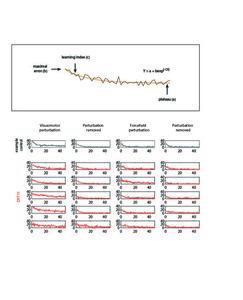Sadnicka, A; Galea, JM; Chen, J-C; Warner, TT; Bhatia, KP; Rothwell, JC; Edwards, MJ
(2018)
Delineating cerebellar mechanisms in DYT11 myoclonus-dystonia.
Mov Disord, 33 (12).
pp. 1956-1961.
ISSN 1531-8257
https://doi.org/10.1002/mds.27517
SGUL Authors: Edwards, Mark John James Sadnicka, Anna
|
Microsoft Word (.docx)
Accepted Version
Available under License ["licenses_description_publisher" not defined]. Download (80kB) |
||
|
Image (TIFF) (Figure 1)
Accepted Version
Available under License ["licenses_description_publisher" not defined]. Download (38MB) | Preview |
|
![[img]](http://sgultest.da.ulcc.ac.uk/110293/8.hassmallThumbnailVersion/R3_fig2.jpg)
|
Image (JPEG) (Figure 2)
Accepted Version
Available under License ["licenses_description_publisher" not defined]. Download (678kB) | Preview |
|
|
PDF (Supplementary Methods)
Accepted Version
Available under License ["licenses_description_publisher" not defined]. Download (182kB) | Preview |
Abstract
BACKGROUND: Recent research has highlighted the role of the cerebellum in the pathophysiology of myoclonus-dystonia syndrome as a result of mutations in the ɛ-sarcoglycan gene (DYT11). Specifically, a cerebellar-dependent saccadic adaptation task is dramatically impaired in this patient group. OBJECTIVES: The objective of this study was to investigate whether saccadic deficits coexist with impairments of limb adaptation to provide a potential mechanism linking cerebellar dysfunction to the movement disorder within symptomatic body regions. METHODS: Limb adaptation to visuomotor (visual feedback rotated by 30°) and forcefield (force applied by robot to deviate arm) perturbations were examined in 5 patients with DYT11 and 10 aged-matched controls. RESULTS: Patients with DYT11 successfully adapted to both types of perturbation. Modelled and averaged summary metrics that captured adaptation behaviors were equivalent to the control group across conditions. CONCLUSIONS: DYT11 is not characterized by a uniform deficit in adaptation. The previously observed large deficit in saccadic adaption is not reflected in an equivalent deficit in limb adaptation in symptomatic body regions. We suggest potential mechanisms at the root of this discordance and identify key research questions that need future study.
| Item Type: | Article | ||||||||||||||||||
|---|---|---|---|---|---|---|---|---|---|---|---|---|---|---|---|---|---|---|---|
| Additional Information: | This is the peer reviewed version of the following article: Sadnicka, A. , Galea, J. M., Chen, J. , Warner, T. T., Bhatia, K. P., Rothwell, J. C. and Edwards, M. J. (2018), Delineating cerebellar mechanisms in DYT11 myoclonus‐dystonia. Mov Disord., 33: 1956-1961, which has been published in final form at https://doi.org/10.1002/mds.27517. This article may be used for non-commercial purposes in accordance with Wiley Terms and Conditions for Use of Self-Archived Versions. | ||||||||||||||||||
| Keywords: | DYT11, Dystonia, adaptation, cerebellum, ɛ-sarcoglycan, 1103 Clinical Sciences, 1106 Human Movement And Sports Science, 1702 Cognitive Science, Neurology & Neurosurgery | ||||||||||||||||||
| SGUL Research Institute / Research Centre: | Academic Structure > Molecular and Clinical Sciences Research Institute (MCS) | ||||||||||||||||||
| Journal or Publication Title: | Mov Disord | ||||||||||||||||||
| ISSN: | 1531-8257 | ||||||||||||||||||
| Language: | eng | ||||||||||||||||||
| Dates: |
|
||||||||||||||||||
| Publisher License: | Publisher's own licence | ||||||||||||||||||
| Projects: |
|
||||||||||||||||||
| PubMed ID: | 30334277 | ||||||||||||||||||
 |
Go to PubMed abstract | ||||||||||||||||||
| URI: | http://sgultest.da.ulcc.ac.uk/id/eprint/110293 | ||||||||||||||||||
| Publisher's version: | https://doi.org/10.1002/mds.27517 |
Statistics
Actions (login required)
 |
Edit Item |


